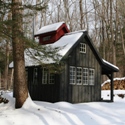My wife and I just finished over 2 hours of cleaning up the result of the attached photo - hoping the photo may provide some clues.
I was sitting in another room and suddenly heard glass break followed by what sounded like a water leak. Never occurred to me until I got over there that this is what I would find.
This bottle was packed 3-4 weeks ago. No problems when filled hot. I pre-heated it in the oven at 190 F. The bottling was done indoors and it was sitting on my dining room table - has been there at least a week or so. Room was 70-75 F.
Any ideas what could have caused this? Any time I've heard of bottles doing this, it is when they are being filled or subjected to thermal shock - not weeks later while sitting in a climate controlled room. I've only packed maybe 8 of these ever - usually do smaller glass.
You can imagine the mess this created... the bottle managed to crack open in a way that ensured every last drop ended up all over the floor, running through the folding self-storing leaves inside the dining table, all over tons of other supplies I had out in the dining room... had to take the table outside and pressure wash it to get it clean.
Broken Bottle_Small.jpg














 Reply With Quote
Reply With Quote




